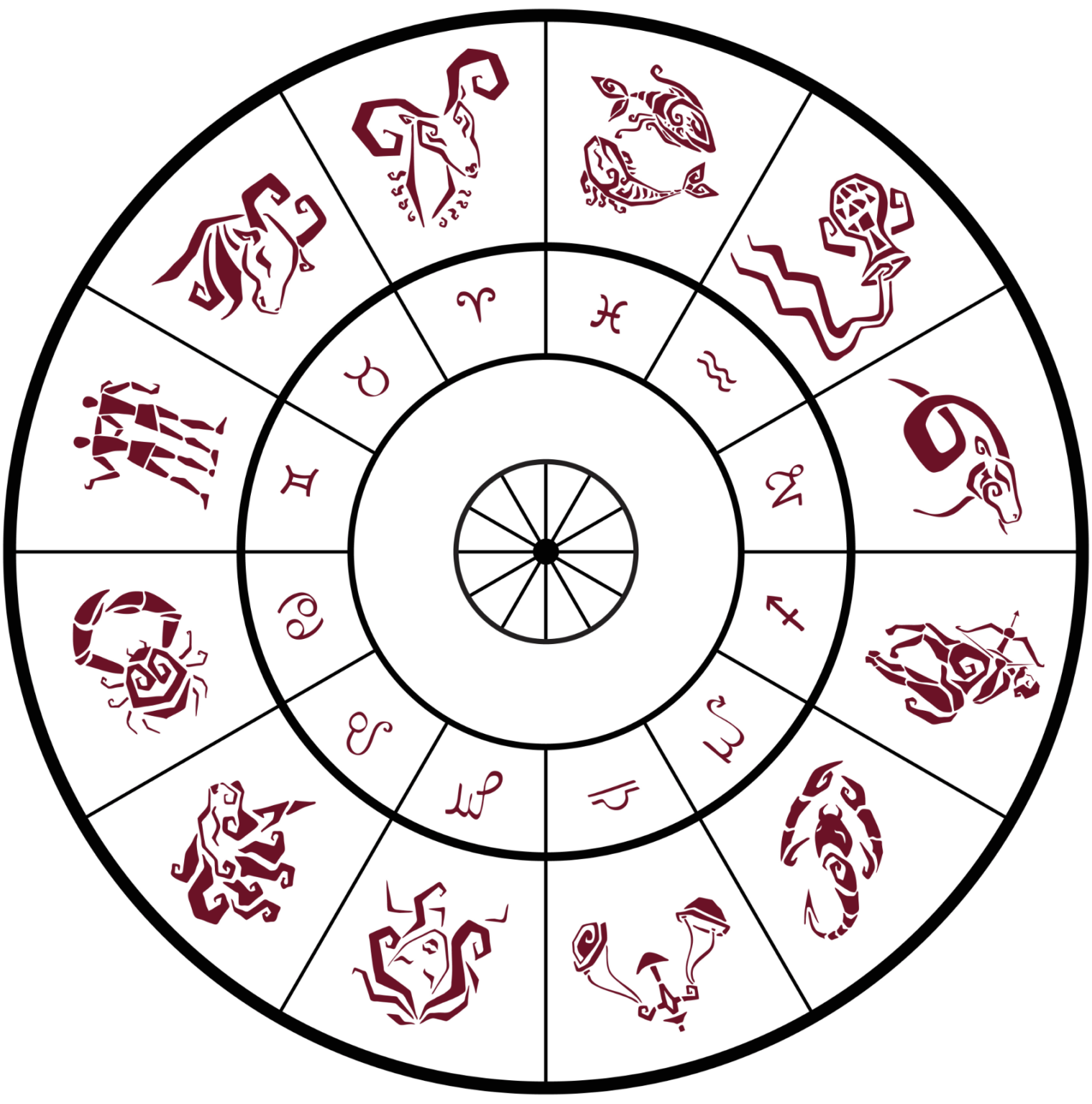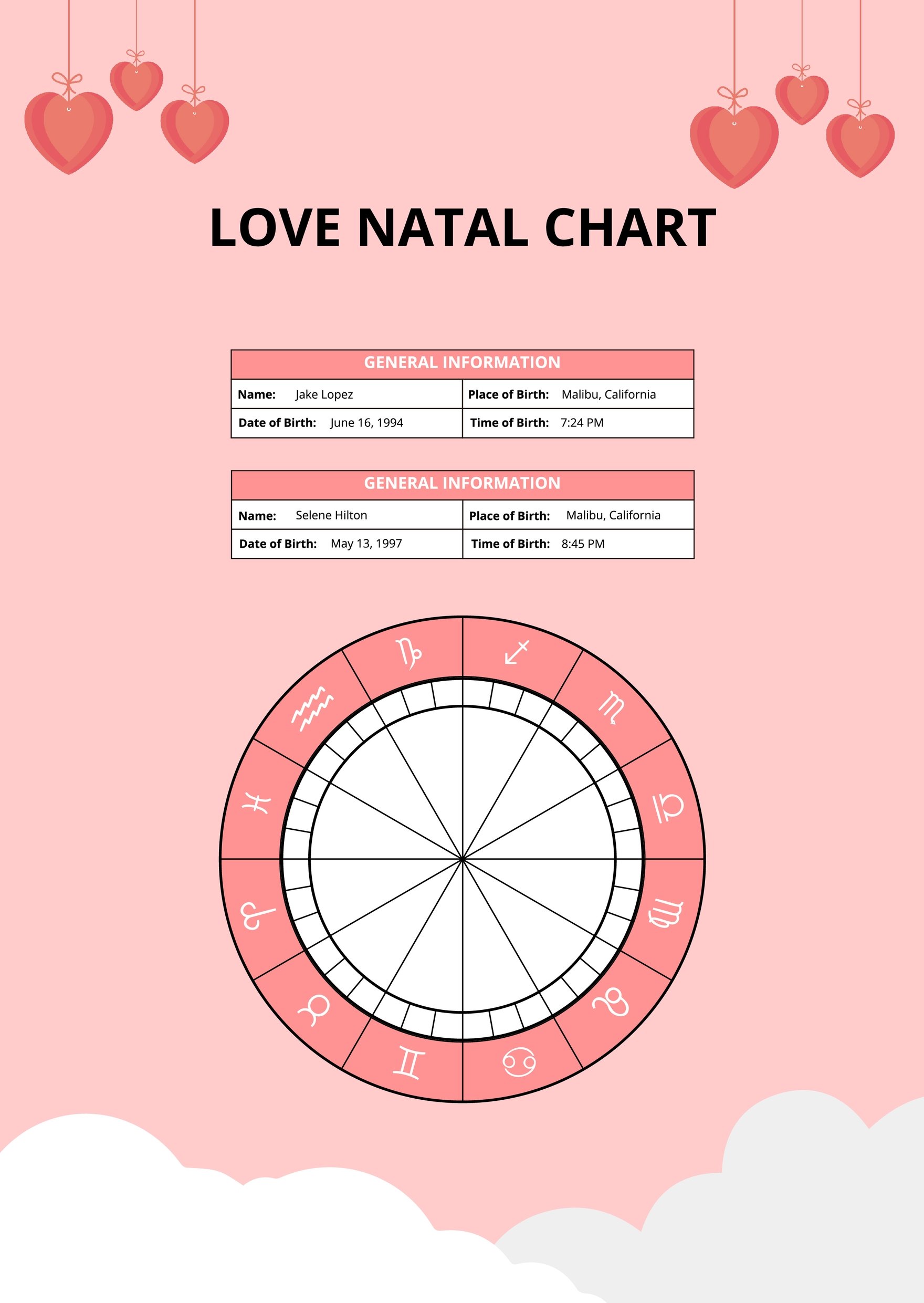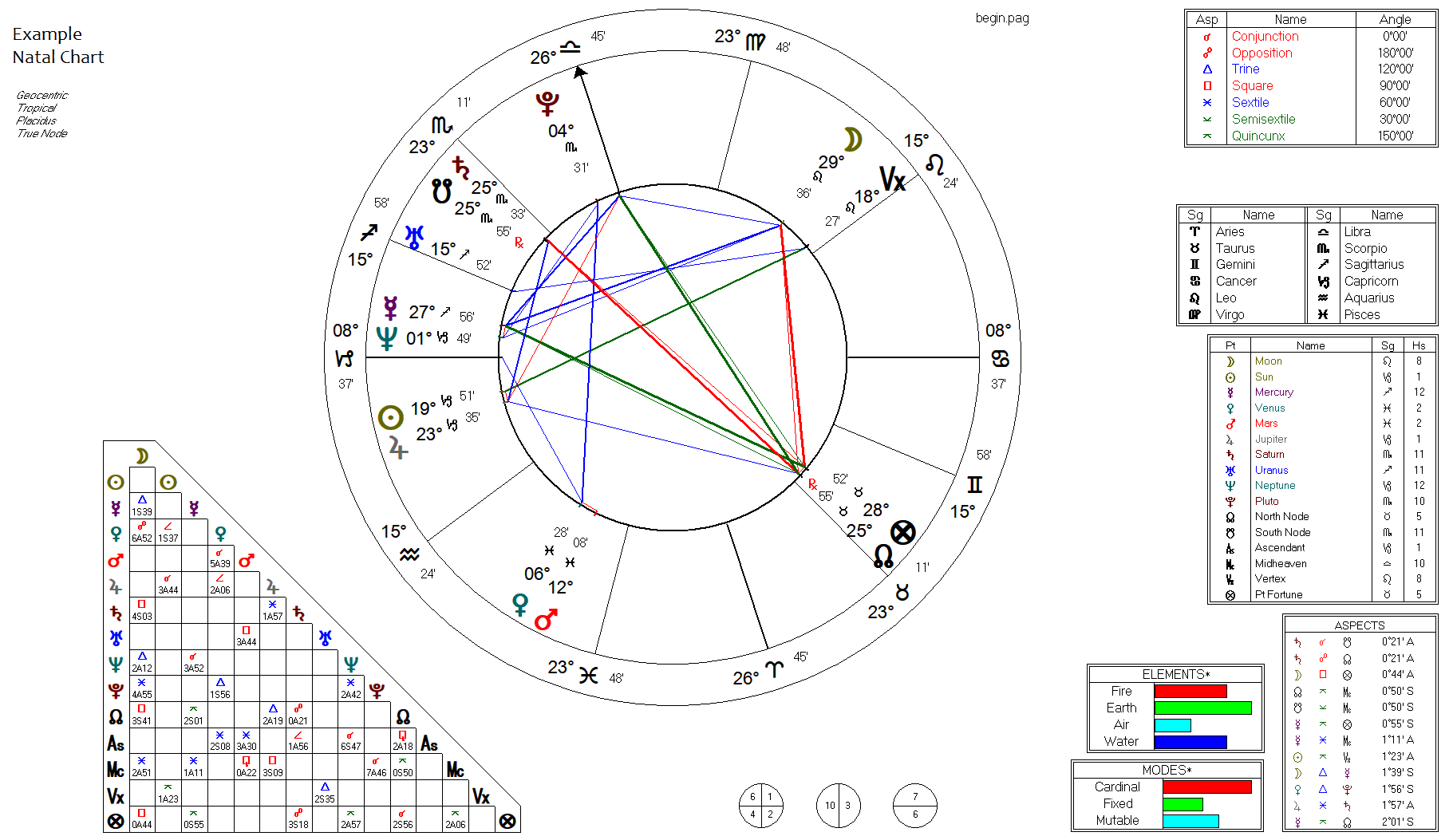Have you ever felt a deep curiosity about what makes you, well, *you*? Perhaps you've heard whispers about a "natal chart" and wondered if it holds some special insights into your personality, your tendencies, or even your life's path. It's a bit like having a unique blueprint, a personal map drawn at the very moment you took your first breath. This isn't about predicting the future, but more about getting to know the energies and patterns that were present then, and how they might show up in your life now. Think of it as a way to really see yourself, to understand the different pieces that make up your whole self, so you can appreciate your strengths and perhaps even work with your challenges in a gentler way.
This personal map, your natal chart, is a picture of the sky from the exact time and place you were born. It shows where the sun, moon, and planets were positioned in relation to the zodiac signs and specific areas of life. Many people find it a truly fascinating tool for self-discovery, a way to gain a clearer view of their own inner workings. It's not about being told who you are, but rather about being given a sort of framework to interpret your own experiences and feelings. So, it's almost like learning a new kind of language, one that helps you interpret your own story.
Learning how to look at your natal chart can feel a little bit like learning to read any new kind of information, actually. Just as you might look at written words and make sense of their meaning, or observe gestures to understand what someone is communicating, a natal chart gives you symbols to look at and figure out what they mean for you. It's about taking in the sense of these astrological symbols, observing their placements, and then interpreting what significance they hold. This guide is here to help you get started on that very personal quest, showing you how to approach your own chart with curiosity and a sense of wonder. You know, it's really quite a rewarding thing to do.
- Sex And The City Movie
- Aaron Rodriguez
- Who Played Todd In Breaking Bad
- Antonio Banderas Daughter
- Jared Goff Girlfriend
Table of Contents
- What Exactly Is a Natal Chart?
- Getting Your Own Chart
- What Are the Key Pieces of Your Natal Chart?
- How Do the Planets Show Up in Your Natal Chart?
- What Do the Zodiac Signs Tell Us?
- Exploring the Houses of Your Chart
- Aspects - The Connections Between Planets
- Putting It All Together
What Exactly Is a Natal Chart?
A natal chart is, quite simply, a snapshot of the sky at the precise moment you were born. It's like a cosmic fingerprint, unique to you. Every single person has one, and no two are exactly alike, unless you happen to share the very same birth time and place, which is a bit rare. It shows the positions of the sun, moon, and all the planets in the zodiac signs, and how they relate to the different parts of your life, which we call houses. In a way, it's a visual representation of the energies that were present when you first arrived. You know, it’s a pretty interesting concept when you think about it.
Understanding the Basics of How to Read Your Natal Chart
To really get a handle on how to read your natal chart, it helps to think of it as a circular diagram, almost like a pie divided into twelve slices. Each slice represents a different area of your life. Around the edge of this circle, you'll see symbols for the twelve zodiac signs, and within the circle, there are symbols for the planets. Lines connect these planets, showing how they interact with each other. It's a system that has been used for a very, very long time to gain insight into human nature. The basic idea is that the positions of these celestial bodies at your birth can offer clues about your personality, your inclinations, and even the kinds of experiences you might encounter. It's about looking at these symbols and figures, and then understanding what they might mean for your personal story. Basically, it’s a way of looking at yourself from a cosmic perspective.
Getting Your Own Chart
Before you can even begin to figure out how to read your natal chart, you need to get your hands on your very own copy. This is a straightforward process thanks to the internet. You'll need three key pieces of information: your exact birth date, the precise time you were born, and the specific location of your birth (city and state or country). The birth time is especially important because it determines your rising sign, which is a really significant part of your chart, and also the placement of the houses. If you don't know your exact birth time, you can often find it on your birth certificate. If that's not possible, many online calculators can still give you a basic chart, but it won't be as precise. Anyway, having the exact details makes a big difference.
- Cast Of The Movie This Is The End
- Actors Of Twilight Breaking Dawn Part 2
- Zendaya Tom Holland
- Blues Room
- Sarah Chapman Diddy
Finding Your Unique How to Read Your Natal Chart Map
Once you have all your birth details, finding your chart is easy. There are many free websites and apps available that will generate your chart for you. You just plug in your information, and with a click, your personal cosmic map appears. These tools will usually present your chart as a circular image, complete with all the symbols for planets, signs, and houses. They might also provide a basic written interpretation of some of the placements, which can be a good starting point. However, to truly learn how to read your natal chart, you'll want to go beyond these automated descriptions and start to piece together the story yourself. It's like looking at a complex drawing and trying to figure out what the artist was trying to convey, you know? It's about seeing the whole picture.
What Are the Key Pieces of Your Natal Chart?
When you first look at your natal chart, it might seem like a jumble of strange symbols and lines. But don't worry, it's not as complicated as it appears at first glance. There are three main components that form the core of your chart: the planets, the zodiac signs, and the houses. Each of these elements plays a distinct role, and when you combine their meanings, that's when the real insights begin to surface. It's a bit like learning to read a new kind of text, where each symbol has a particular sound or meaning, and putting them together creates a complete thought. So, you're essentially learning to interpret a kind of cosmic language, which is rather cool.
Deciphering the Symbols in How to Read Your Natal Chart
To truly learn how to read your natal chart, you'll need to get familiar with the symbols. Each planet has its own unique glyph, as does each zodiac sign. The houses are typically numbered around the circle. You don't need to memorize them all instantly, but having a reference guide handy as you start is very helpful. Think of it like learning to recognize letters in an alphabet; once you know what each one looks like, you can start to sound out words. The more you look at your chart and connect the symbols to their meanings, the more natural it will become. It's a process of gradually taking in the sense of these unique characters, much like you would when learning to read any new set of symbols or figures. Basically, it’s about becoming familiar with the visual language of the chart.
How Do the Planets Show Up in Your Natal Chart?
The planets in your natal chart represent different parts of your personality and various energies that drive you. Each planet, from the fast-moving Moon to the slower, outer planets like Pluto, symbolizes a specific function or impulse. For example, the Sun represents your core self, your ego, and your life's purpose. The Moon speaks to your emotional world and your instincts. Mercury is about how you think and communicate. Venus relates to love, beauty, and what you value. Mars shows your drive and how you assert yourself. Jupiter is about growth and expansion, while Saturn deals with discipline and responsibility. The outer planets (Uranus, Neptune, Pluto) represent broader, generational themes and deeper psychological currents. So, you know, each one has its own special job.
Seeing Planetary Influences in How to Read Your Natal Chart
When you're figuring out how to read your natal chart, you'll notice that each planet is placed in a specific zodiac sign and a specific house. This combination is what gives the planet its unique expression in your life. For instance, if your Mars is in a fiery sign like Aries, you might be a very direct and assertive person. If it's in a watery sign like Cancer, your assertiveness might be more emotionally driven or expressed through nurturing others. The house it's in tells you *where* this energy is most likely to show up. So, Mars in the house of relationships might mean you're quite passionate in partnerships. It's like taking the meaning of a word and then seeing how it changes based on the context of the sentence it's in. This helps you to make out the significance of these planetary placements by careful observation. That, is that, a pretty neat way to see things.
What Do the Zodiac Signs Tell Us?
The twelve zodiac signs (Aries, Taurus, Gemini, Cancer, Leo, Virgo, Libra, Scorpio, Sagittarius, Capricorn, Aquarius, Pisces) describe the *how* or the *style* in which planetary energies are expressed. Each sign has its own unique set of characteristics, qualities, and ways of operating. For example, Aries is known for being pioneering and energetic, while Taurus is more grounded and steady. Gemini is communicative and curious, and Cancer is nurturing and emotional. When a planet is in a particular sign, it takes on the flavor of that sign. So, your Sun sign, which is probably what most people know as "their sign," tells you a lot about your core personality and how you approach life in general. It's really quite descriptive, you know.
Connecting Signs to Your How to Read Your Natal Chart
As you learn how to read your natal chart, you'll see that every planet falls into one of these signs. This adds a layer of depth to the planet's meaning. For example, if your Mercury (how you communicate) is in Gemini, you might be a very quick-witted and versatile speaker. If it's in Capricorn, your communication might be more practical and structured. The sign colors the planet's expression, giving it a particular tone. It's like having a specific kind of voice for each part of your being. You're looking at these symbols, these pictures of the signs, and then figuring out what they mean in combination with the planets. This process of looking at the different pieces and then interpreting their combined meaning is really central to understanding your chart. It's just a little bit like understanding different dialects of a language.
Exploring the Houses of Your Chart
The twelve houses of the natal chart represent different areas of life and experience. Unlike the planets and signs, which are based on the actual positions of celestial bodies, the houses are determined by your exact birth time and location. They divide the circular chart into twelve segments, starting with the Ascendant (or Rising Sign) as the cusp of the First House. Each house relates to a specific part of your existence: the First House is about your identity and appearance, the Second about your values and possessions, the Third about communication and siblings, and so on. They describe the *where* in your life where planetary energies and sign qualities play out. So, you might have a planet in a certain sign, but the house tells you which part of your life that energy will primarily affect. It’s a very practical way to see things, in some respects.
The Areas of Life in How to Read Your Natal Chart
When you're trying to figure out how to read your natal chart, paying attention to the houses is very important. A planet placed in a particular house means that the energy of that planet, expressed through the sign it's in, will be most active in that area of your life. For example, if your Venus (love and values) is in your Seventh House (partnerships), relationships might be a central focus for you, and you'll likely seek harmony and beauty within them. If your Mars (action and drive) is in your Tenth House (career and public image), you might be very ambitious and driven in your professional life. It's like seeing a story unfold on a stage, where the houses are the different sets where the action takes place. You are essentially looking at the chart and making out the significance of where these energies are placed, by carefully observing them. That, is that, quite a helpful way to organize the information.
Aspects - The Connections Between Planets
Beyond the individual placements of planets in signs and houses, the lines drawn between planets in your chart are called "aspects." These lines represent the geometric angles between the planets from your birth perspective, and they describe how the different parts of your personality interact with each other. Some aspects, like trines and sextiles, are considered harmonious, suggesting an easy flow of energy between those parts of yourself. Others, like squares and oppositions, can indicate tension or challenges, areas where you might experience inner conflict or external friction. Conjunctions, where planets are very close together, mean their energies are strongly blended. These aspects add a layer of dynamic interplay to your chart, showing how your various drives and needs might support or challenge one another. You know, it's a bit like seeing how different characters in a story relate to each other.
Drawing Lines in How to Read Your Natal Chart
When you're working on how to read your natal chart, the aspects are where you really start to see the nuances of your character. A square between your Moon (emotions) and Mars (action) might mean you sometimes act impulsively when you're feeling emotional. A trine between your Sun (core self) and Jupiter (growth) could suggest you have a natural optimism and find it easy to expand your horizons. These connections show the natural patterns of energy flow within you. It's about looking at these lines and figuring out what kind of conversation the planets are having with each other. It’s like looking at a complex diagram and apprehending or interpreting the meaning of the connections shown. Very, very interesting, if you ask me.
Putting It All Together
Learning how to read your natal chart is a bit like becoming a storyteller, where your chart is the main character. You start by looking at each piece individually: what does your Sun sign say about your core self? How does your Moon sign describe your emotional nature? Where are your planets located in the houses, showing where these energies play out? Then, you start to connect the dots. How does your Mercury sign (communication style) interact with your Mars sign (how you take action) through the aspects? It’s about seeing the whole picture, not just isolated parts. The true art comes from synthesizing all this information into a coherent narrative about who you are and how you experience life. This is where you really start to make sense of the language of your chart. So, you know, it’s a creative process, too.
Making Sense of Your How to Read Your Natal Chart Story
As you continue to learn how to read your natal chart, you'll find that it offers a very rich source of self-reflection. It's not about being defined by your chart, but rather about using it as a tool to gain deeper awareness. When you look at the symbols and their arrangements, you're essentially looking at a map of your potential and your inherent qualities. It helps you to acknowledge your strengths, understand your patterns, and even approach your challenges with a bit more self-compassion. The more you look at your chart and connect it to your lived experiences, the more personal and meaningful it becomes. It’s a bit like reading a book about yourself, where each page reveals something new and helps you understand the bigger story. That, is that, a truly personal way to approach self-discovery.
- Eva Mendes Movies
- Celebrity Barbies
- Glass Fragments Bread Recall
- August Francesca Coppola Cage
- Jalen Hurts Mom


